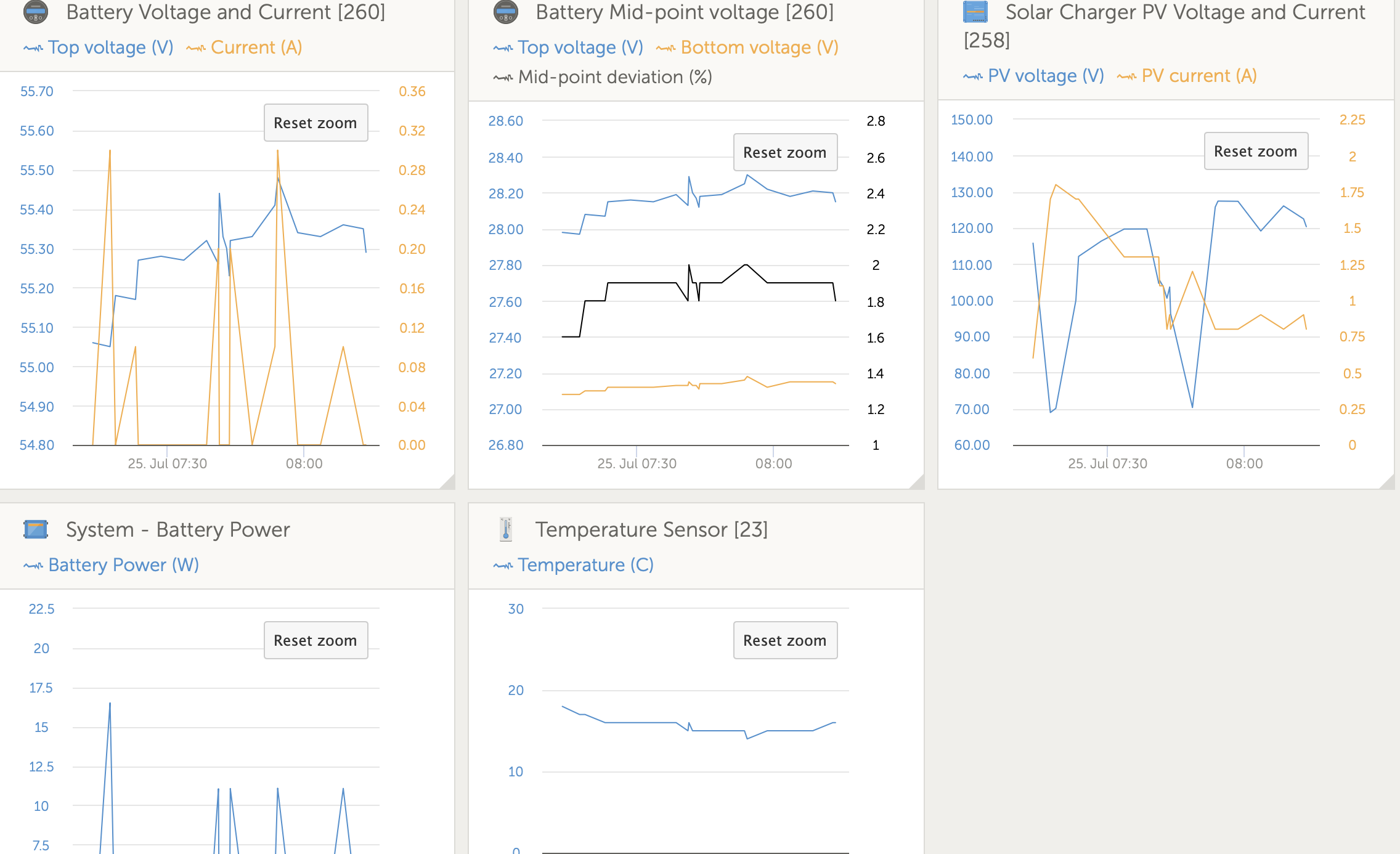I have noticed that DVCC responds immediately to changes, particularly temperature changes.
Where equipment is in a warmer environment and then gets exposed to cooler air this results in rapid temperature drops and larger, sudden increases in charge voltage. This sets off midpoint voltage alarms on shunts and these transients aren't great for battery life.
Could DVCC logic not be improved, to normalise these changes (temp/voltage) over a few minutes, say 5 to 10 minutes so that changes are smoother and more gradual, eliminating transients?

